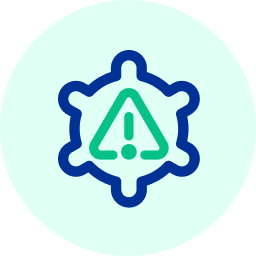#045: Transforming IIoT Data Analysis: Continuous Temperature Mapping (cTM) and Beyond
Continuous Temperature Mapping (cTM) transforms traditional temperature monitoring, providing a cutting-edge solution that ensures compliance, operational efficiency and data-driven decision-making.
1.0. Introduction
In the modern manufacturing and life sciences world, accurate monitoring of environmental parameters such as temperature, humidity and pressure is critical. Continuous Temperature Mapping (cTM) is a breakthrough product that provides real-time data analytics and automation to ensure accuracy and compliance.
Although focused on temperature mapping, this innovative approach can be applied to all IIoT data from manufacturing lines. In the highly regulated medtech, biotech and pharmaceutical industries, maintaining precise temperature control is critical. Continuous Temperature Mapping (cTM) transforms traditional temperature monitoring, providing a cutting-edge solution that ensures compliance, operational efficiency and data-driven decision-making.
2.0. The Traditional Temperature Mapping Process: A Manual and Tedious Task
Identifying logger placements, collecting data, and analyzing it manually has been the standard approach for years, but it’s far from efficient. Here’s how the typical process unfolds:
-
Identify logger placements and use NIST-certified data loggers.
-
Collect data over the duration of the study (usually 8–14 days).
-
Manually upload data from the loggers and building management system (BMS) into Excel for analysis.
This manual approach is time-consuming, error-prone, and never fun. It requires a lot of effort to produce reliable reports and can compromise accuracy.
3.0. Revolutionizing Temperature Mapping with Automation and AI
cTM transforms the way temperature data is collected, processed, and visualized. By replacing manual processes with automation and real-time data ingestion, cTM streamlines temperature mapping while improving accuracy and efficiency. The platform leverages Azure AD for authentication, AWS Cloud for secure data ingestion, and interactive visualizations, delivering actionable insights and simplified compliance.
Here’s how cTM works:
-
Real-time data collection: Wireless RF sensors transmit data in real time to the cloud via a secure virtual private network (VPN) tunnel.
-
Automated data ingestion and processing: Data is automatically collected at any predetermined interval.
-
Dashboards: Users can easily create interactive visualizations in a few clicks to display important metrics such as temperature variations, summary statistics, and validation outcomes.
-
AI-powered insights: With "Chat with Data," users can engage with the dataset using natural language prompts, generate statistical analyses, and create visualizations on the spot.
4.0. Key Features of cTM Dashboards
The Continuous Temperature Mapping (cTM) platform offers a suite of dashboards designed to provide real-time insights and ensure compliance with temperature monitoring standards. Each dashboard serves a specific purpose, making it easier to analyze and manage environmental conditions across facilities.
Displays continuous data from fixed sensors, including:
-
Minimum, maximum, and average temperature readings.
-
Timeline graphs for tracking temperature variations over time.
-
Statistical significance tests to detect anomalies and ensure data accuracy.
Monitors temporary loggers placed around fixed sensors, providing a detailed comparison to ensure deviations remain within acceptable limits.
-
Minimum, maximum, and average temperature readings.
-
Timeline graphs for tracking temperature variations over time.
-
Statistical significance tests to detect anomalies and ensure data accuracy.
3. Temperature Mapping Dashboard
Uses proximity-based grouping to validate that monitored areas stay within the specified temperature range.
-
Groups sensors by defined spatial criteria (e.g., 40 feet laterally, 5 feet vertically).
-
Automatically verifies that the monitored area remains within ±2°C of the target temperature range.
-
Provides pass/fail validation based on data consistency and compliance requirements.
-
Highlights deviations exceeding the 5% threshold for immediate corrective action.
-
Offers day-wise summaries and real-time deviation analysis.
The automation streamlines the process of sensor matching, eliminating the need for manual intervention, and guarantees data accuracy by employing latitude/longitude-based euclidean distance calculations to verify compliance.
5.0. AI-Driven Data Analysis and Machine Learning
The incorporation of AI agents elevates cTM beyond basic data visualization, enabling advanced functionalities and capabilities. AI assesses datasets, recognizes patterns, and utilizes the most effective machine learning models to ensure precise forecasting and detection of anomalies.
-
Predictive Analytics: Employs historical data to forecast future temperature patterns.
-
Hypothesis Testing: Evaluates and verifies forecasting models by utilizing real-time data.
-
Automatic Model Selection: The system evaluates various models and chooses the most appropriate one for the given dataset in real-time.
-
Scalable Architecture: Constructed using microservices, the system effectively handles billions of data points from thousands of IIoT sensors without any decline in performance.
6.0. Real-Time Collaboration and Reporting
The integration of advanced technology ensures seamless collaboration and real-time reporting among different teams. Dashboards can be easily shared, requested, and created within the platform, simplifying communication and reducing administrative tasks.
Additionally, the ‘Chat with Data’ feature allows users to interact directly with datasets through natural language prompts. It automatically generates Python-based code for statistical tests, visualizations, and customized reports—eliminating the need for manual scripting and significantly reducing the risk of human error.
7.0. Conclusion: The Future of IIoT Data Analysis
Continuous Temperature Mapping is not just about temperature. It’s a scalable, flexible framework for analyzing any IIoT time-series data. Whether it’s temperature, humidity, pressure, or other parameters, the architecture’s real-time capabilities and AI-driven insights empower organizations to:
-
Reduce Errors
-
Improve Compliance
-
Make Data-Driven Decisions
-
Enhance Operational Efficiency
From predictive analytics to advanced data monitoring, cTM paves the way for a new era of data-driven efficiency and precision.
8.0. Latest AI News
- 𝗔𝗜 𝗶𝘀 𝘁𝗿𝗮𝗻𝘀𝗳𝗼𝗿𝗺𝗶𝗻𝗴 𝗲𝗻𝘁𝗲𝗿𝗽𝗿𝗶𝘀𝗲 𝗮𝗿𝗰𝗵𝗶𝘁𝗲𝗰𝘁𝘂𝗿𝗲—𝗮𝗿𝗲 𝘆𝗼𝘂 𝗿𝗲𝗮𝗱𝘆 𝘁𝗼 𝘀𝗲𝗲 𝗵𝗼𝘄?
- 𝙄𝙢𝙖𝙜𝙞𝙣𝙚 𝙘𝙤𝙣𝙩𝙧𝙤𝙡𝙡𝙞𝙣𝙜 𝙮𝙤𝙪𝙧 𝙙𝙞𝙜𝙞𝙩𝙖𝙡 𝙡𝙞𝙛𝙚 𝙬𝙞𝙩𝙝𝙤𝙪𝙩 𝙚𝙫𝙚𝙧 𝙩𝙤𝙪𝙘𝙝𝙞𝙣𝙜 𝙮𝙤𝙪𝙧 𝙨𝙘𝙧𝙚𝙚𝙣—𝙢𝙚𝙚𝙩 𝙩𝙝𝙚 𝙛𝙪𝙩𝙪𝙧𝙚 𝙤𝙛 𝘼𝙄 𝙞𝙣𝙩𝙚𝙧𝙖𝙘𝙩𝙞𝙤𝙣
- Lindus Health, a London-based startup, has secured a $55 million Series B funding round to revolutionize the clinical trial industry through automation and artificial intelligence.



COMMENTS